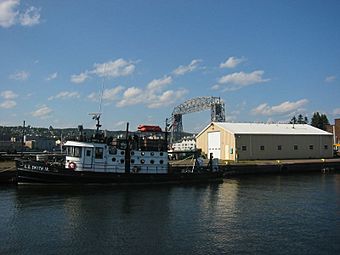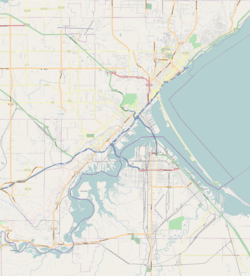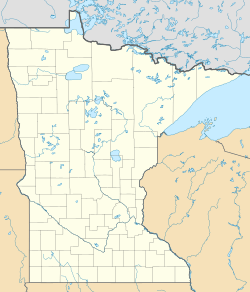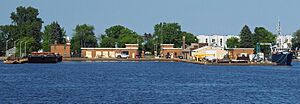U.S. Army Corps of Engineers Duluth Vessel Yard facts for kids
Quick facts for kids |
|
|
U.S. Army Corps of Engineers Duluth Vessel Yard
|
|

A tugboat, pier, and support building at the Duluth Vessel Yard
|
|
| Location | 901 Minnesota Avenue, Duluth, Minnesota |
|---|---|
| Area | 2.2 acres (0.89 ha) |
| Built | 1926–31, 1940–41, 1948 |
| Architectural style | Utilitarian |
| NRHP reference No. | 95001163 |
| Added to NRHP | October 23, 1995 |
The U.S. Army Corps of Engineers Duluth Vessel Yard is a special place in Duluth, Minnesota. It's like a home base for big boats and equipment. Here, the United States Army Corps of Engineers (USACE) keeps tools and boats. They use them to take care of the harbors in Duluth and Superior, Wisconsin. These two cities are often called the Twin Ports.
This yard started on Minnesota Point way back in 1903. Many of its buildings were built later, mostly around 1941. In 1995, the Duluth Vessel Yard became a historic place. It's important because it helped Duluth and Superior grow. It also shows how the government helped build and keep our waterways safe for ships. This yard is key to how the Twin Ports make money through shipping.
Building the Duluth Harbor: A Look Back
After the St. Mary's Falls Ship Canal was finished, ships could carry goods easily. They moved grain, wood, coal, and iron ore from the Midwestern United States. These goods went all the way to ports on the East Coast of the United States.
Making a Busy Port
By the late 1800s, the U.S. Army Corps of Engineers had a big job. They needed to create a busy harbor at the end of Lake Superior. For many years, they worked hard. They built walls to protect the harbor and dug out channels. They also built docks for bigger and bigger cargo ships.
Iron Ore and Dredging
Around 1900, the Vermilion and Mesabi Iron Ranges were producing a lot of iron. They made about 8 million tons of ore each year! The Corps was very busy. Between 1897 and 1902, they dug out 22 million cubic yards of dirt and rock. This work was done in the Duluth and Superior harbors. They created a 360-acre harbor with 17 miles of ship channels. By 1906, only New York and Philadelphia shipped more goods than Duluth and Superior.





